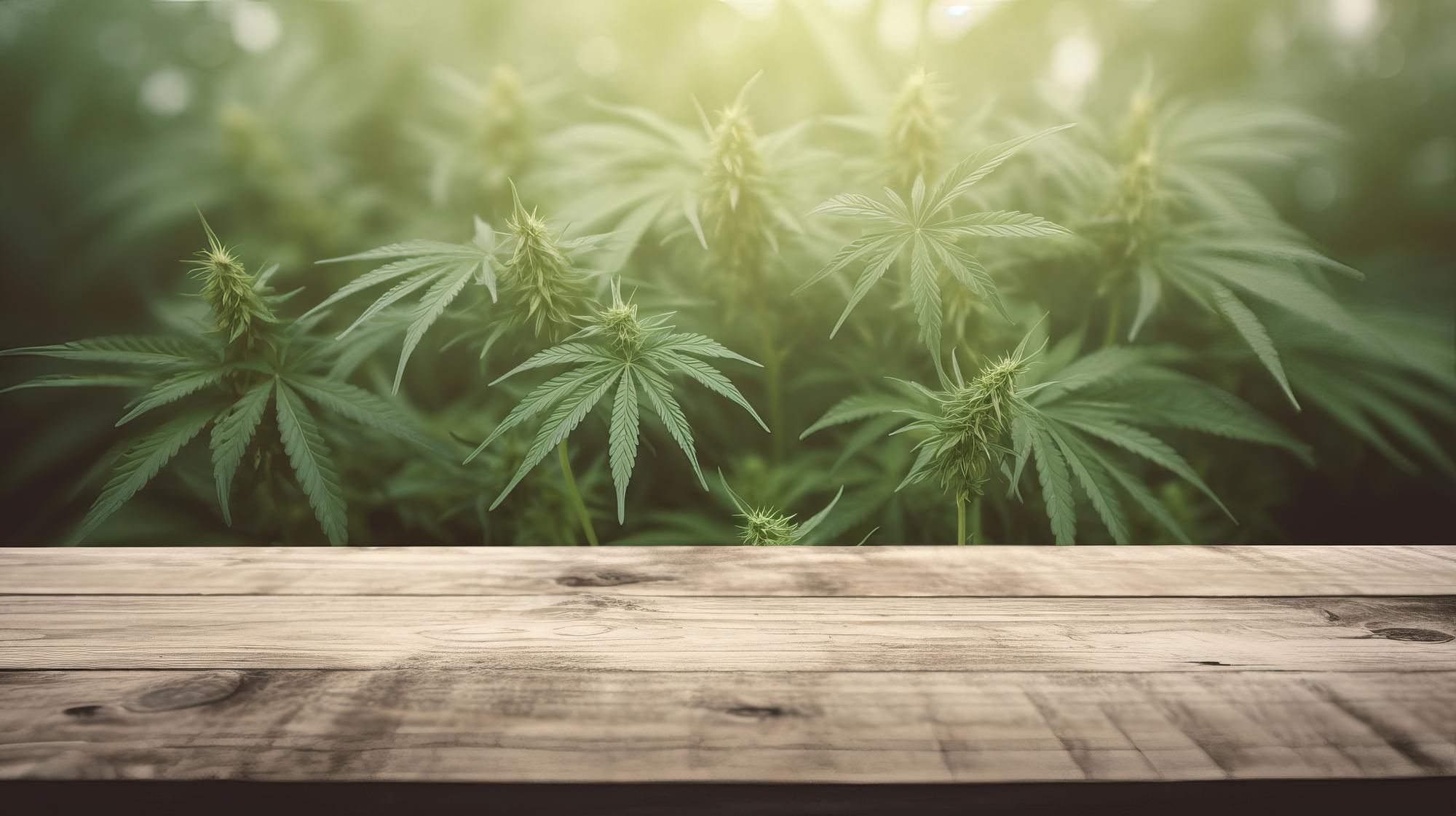What are cannabis terpenes and why are they so important?
Terpenes are aromatic compounds found in many plants - including cannabis. They are responsible for the characteristic smell and taste of different cannabis varieties. But terpenes are much more than just fragrances. They play a crucial role in the effects and therapeutic potential of cannabis.
The importance of terpenes in the cannabis plant
In nature, terpenes serve as protection for the cannabis plant against pests and attract pollinating insects. However, they are interesting for us humans for other reasons:
- They influence the effects of THC and CBD
- They have their own therapeutic properties
- They significantly determine the consumer experience
Scientists have identified over 150 different terpenes in cannabis. Each cannabis strain has its unique terpene profile that gives it specific properties.
The entourage effect: the interaction of terpenes and cannabinoids
Terpenes do not work in isolation, but in synergy with cannabinoids such as THC and CBD. This interaction is known as the entourage effect. It explains why full-spectrum cannabis products are often more effective than isolated cannabinoids.
For example, the terpene myrcene can make the blood-brain barrier more permeable. This allows THC and CBD to reach the brain more quickly, which intensifies and accelerates the effect.
Terpenes as a guide to the effect
If you know about terpenes, you can better assess the effects of a cannabis strain. Here are some examples:
| Terpen | aroma | Potential impact |
|---|---|---|
| Limonen | Citrus fruits | Mood-enhancing, energizing |
| Myrcen | Earthy, musty | Sedative, analgesic |
| Pinen | Pines, firs | Concentration-enhancing, anti-inflammatory |
Research into cannabis terpenes is still in its early stages, but their potential is enormous. In the future, tailor-made terpene blends could revolutionize cannabis therapy and open up completely new applications.
The Top 5 Terpenes in Cannabis and Their Unique Effects
Cannabis contains a variety of terpenes, but some are particularly common and have notable properties. Let's take a closer look at the top 5 cannabis terpenes and their potential effects.
1. Myrcene: The relaxation artist
Myrcene is the most common terpene in cannabis. It has an earthy, sometimes slightly fruity smell and is known for its relaxing properties.
- Promotes sleep and relaxation
- Can have a pain-relieving effect
- May enhance the psychoactive effects of THC
2. Limonene: The mood enhancer
Limonene has an intense citrus smell and is found not only in cannabis, but also in lemons and oranges. It is known for its mood-enhancing properties.
- Can reduce stress and anxiety
- May have an antidepressant effect
- Has anti-inflammatory properties
3. Pinene: The concentration enhancer
Pinene has a fresh, pine-like scent. It is found not only in cannabis, but also in many coniferous trees. Pinene is known for its potentially concentration-enhancing properties.
- Can improve short-term memory
- May have anti-inflammatory effects
- May have bronchodilator properties
4. Linalool: The calming agent
Linalool has a floral, lavender-like scent. It is known for its calming and anti-anxiety properties.
- Can reduce stress and anxiety
- May act as a sleep aid
- Has potential antiepileptic properties
5. Caryophyllene: The pain reliever
Caryophyllene has a spicy, peppery smell. It is unique among terpenes in that it can also interact directly with the endocannabinoid system.
- Could have anti-inflammatory effects
- May have pain-relieving properties
- Can reduce anxiety
It is important to emphasize that research on terpenes is still in its early stages. Many of the effects reported are based on preliminary studies or traditional knowledge and have yet to be confirmed by extensive clinical trials.
| Terpen | aroma | Main effects |
|---|---|---|
| Myrcen | Earthy, fruity | Relaxing, pain-relieving |
| Limonen | Citrus fruits | Mood-enhancing, anti-inflammatory |
| Pinen | Pine, fir | Promotes concentration, improves memory |
| Linalool | Lavender, floral | Calming, anti-anxiety |
| Caryophyllen | Spicy, peppery | Pain-relieving, anti-inflammatory |
Knowing these terpenes and their potential effects can help you find the cannabis strain that's best for you. However, keep in mind that each person's reaction to terpenes may be unique and more research is needed to fully understand their effects.
The Entourage Effect: How Terpenes Work Synergistically with Cannabinoids
The entourage effect is a fascinating phenomenon that describes the complex interaction between cannabinoids and terpenes in the cannabis plant. This effect explains why the overall effect of cannabis is often greater than the sum of its parts.
What exactly is the entourage effect?
The term "entourage effect" was coined in 1998 by Israeli researchers Raphael Mechoulam and Shimon Ben-Shabat. It describes how different cannabinoids and terpenes work together to enhance or modulate the therapeutic effects of cannabis.
Think of the entourage effect like an orchestra: each instrument (cannabinoid or terpene) has its own sound, but together they create a symphony that is bigger than any individual note.
Examples of synergistic effects
- THC + CBD: CBD can mitigate the psychoactive effects of THC while enhancing its pain-relieving properties.
- THC + Myrcene: Myrcene can make the blood-brain barrier more permeable, which increases the effects of THC.
- CBD + Limonene: This combination could be particularly effective in combating anxiety.
Scientific findings
Although the entourage effect is not yet fully understood, there is increasing scientific evidence for its existence:
| study | Result |
|---|---|
| Russo (2011) | Terpenes can modulate the effects of THC and CBD |
| Pamplona et al. (2018) | CBD-rich extracts were more effective in epilepsy than pure CBD |
Significance for medical applications
The entourage effect has important implications for the medical use of cannabis:
- Full-spectrum extracts may be more effective than isolated cannabinoids in many cases.
- Tailor-made terpene blends could improve the effectiveness of cannabis medications.
- Research into specific cannabinoid-terpene combinations could lead to new, more effective therapies.
Challenges and future research
Despite promising evidence of the entourage effect, there are still many unanswered questions:
- How exactly do terpenes and cannabinoids interact on a molecular level?
- Which specific combinations are most effective for which medical applications?
- How can we optimally use the entourage effect for therapeutic purposes?
The answers to these questions could have a significant impact on the future of cannabis medicine. While we await further research, it is important to respect the complexity of the cannabis plant and consider holistic approaches.
The entourage effect underlines that in nature the whole is often greater than the sum of its parts. It encourages us to view cannabis not only as a source of individual active ingredients, but as a complex interplay of different components that together develop their full potential.
Using terpenes in a targeted manner: How to optimize your cannabis experience
With knowledge of cannabis terpenes, you can control and optimize your consumption experience. Here you will learn how to consciously use terpenes to achieve the effects you want.
Choose your variety carefully
The first step to optimizing your cannabis experience is to consciously choose your strain based on its terpene profile:
- For relaxation: look for varieties with high myrcene content
- For focus and energy: Look for varieties rich in pinene and limonene
- For stress relief: Choose varieties with a lot of linalool
Temperature control when vaporizing
When using a vaporizer, you can specifically activate certain terpenes by controlling the temperature:
| temperature | Activated terpenes | Potential effects |
|---|---|---|
| 165°C - 173°C | Pinene, Myrcene | Mild, focusing |
| 174°C - 185°C | Limonene, Linalool | Euphoric, relaxing |
| 185°C - 195°C | Caryophyllen | Sedative, analgesic |
Combining terpenes
You can further refine your experience by combining cannabis with other terpene-containing plants or essential oils:
- Lavender (rich in linalool) for additional relaxation
- Lemongrass (rich in myrcene) for enhanced sedative effects
- Rosemary (rich in pinene) for improved concentration
Preserve and protect terpenes
To utilize the full potential of terpenes, it is important to store and treat them properly:
- Store your cannabis in a cool, dark place in airtight containers.
- Avoid over-crushing as this can release terpenes.
- When extracting cannabis oils, use gentle methods to preserve terpenes.
Experiment and document
Everyone reacts differently to terpenes. Keep a "cannabis diary" to document your experiences:
- Note the strain used and its dominant terpenes
- Describe the effects experienced
- See which combinations work best for you
Terpenes in aromatherapy
You can also enjoy the effects of terpenes without consuming cannabis. Many essential oils contain the same terpenes as cannabis:
- Use lavender oil (linalool) for better sleep
- Use lemon oil (limonene) to brighten your mood
- Use peppermint oil (menthol) for improved concentration
Keep in mind that the effects of terpenes can be subtle and often take time to develop. Be patient and attentive when experimenting with different terpene profiles.
By using terpenes consciously and purposefully, you can refine and personalize your cannabis experience. Remember that terpenes are only part of the picture - factors like your individual physiology, environment, and state of mind also play an important role in your experience.
The Future of Terpenes: New Research and Potential Medical Applications
Research into cannabis terpenes is still in its early stages, but the findings so far are promising. Scientists are constantly discovering new potential applications that could revolutionize the future of medicine and therapy.
Current research focuses
Researchers are currently focusing on several areas in which terpenes could play an important role:
- Cancer therapy: Some terpenes show anti-tumor properties in laboratory studies
- Neurodegenerative diseases: Potential neuroprotective effects are being investigated
- Pain management: Terpenes could improve the effectiveness of painkillers
- Mental health: Possible applications in anxiety disorders and depression
Personalized medicine
A particularly exciting future scenario is the development of personalized terpene blends:
- Individual terpene profiling for patients
- Tailor-made cannabis preparations based on specific needs
- Optimizing effectiveness through precise terpene-cannabinoid combinations
New administration methods
Innovative technologies could revolutionize the way we use terpenes:
| method | Description | Potential benefits |
|---|---|---|
| Nanoencapsulation | Encapsulate terpenes in microscopically small capsules | Improved bioavailability, targeted release |
| Transdermal patches | Administer terpenes through the skin | Long-lasting, constant release of active ingredients |
| Inhalation devices | Precise dosing of specific terpene blends | Fast action, precise control |
Challenges and open questions
Despite the great potential, there are still some hurdles to overcome:
- Standardization: How can we ensure consistent terpene blends?
- Dosage: What amounts are necessary for therapeutic effects?
- Interactions: How do terpenes affect the effects of other medications?
- Long-term effects: Are high-dose terpenes safe in the long term?
Potential areas of application outside medicine
Research into cannabis terpenes could also spark innovation in other areas:
- Food industry: development of new flavours and functional foods
- Cosmetics: Terpenes in anti-aging products and skin care products
- Agriculture: Natural pesticides and growth promoters
- Aromatherapy: Refined, scientifically based applications
The way to the future
Further extensive studies are needed to unlock the full potential of cannabis terpenes. Clinical trials on humans will be crucial to confirm the promising laboratory results.
The future of terpenes in medicine and beyond is bright. As research advances, we may soon be able to harness the healing properties of the cannabis plant even more precisely and effectively. It's an exciting time for scientists, medical professionals and patients alike as we continue to unravel the mysteries of these fascinating compounds.

















